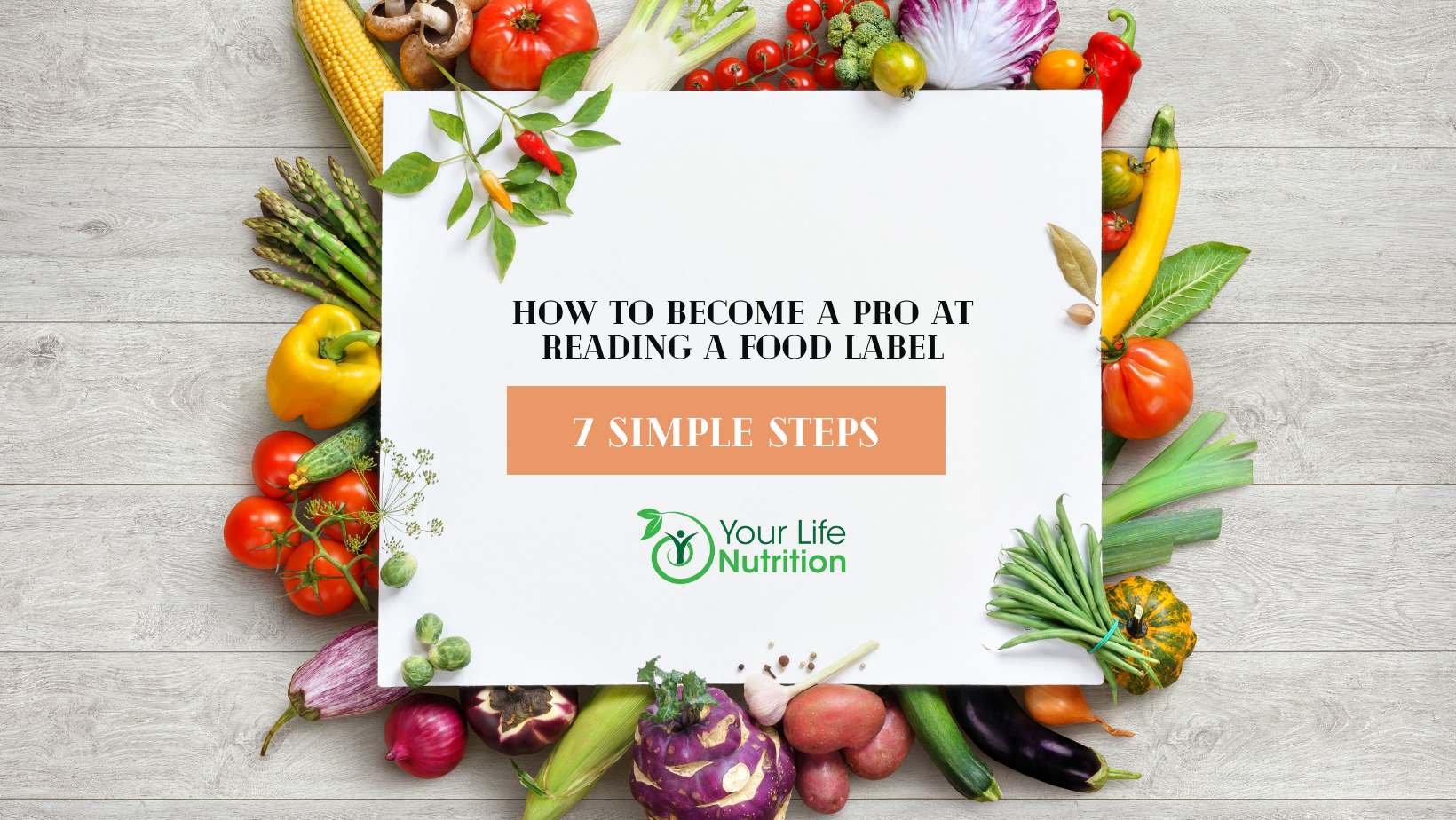Trying to navigate a food label can be intimidating and confusing. Without a proper understanding of how to read a food label, we can easily miscalculate the amount of nutrients we are consuming at a time. Whether you want to track macros, find the amount of sugar in a product, count calories, or simply gain a basis for the nutrient composition you are getting from your foods, reading a food label can be simple if you know what to look for.
Here, we will discuss 7 important areas to note on a food label:
- The serving size
- The calories
- Fat
- Sodium
- Carbohydrates (fiber/sugar)
- Protein
- % Daily Value
First, we need to draw our attention to the top of the food label for the serving size. You may be asking, “What is a serving size?” This is the amount of product that contains the number of nutrients listed in the label following. Something important to note is that a serving size is very rarely the entire package of yummy treats. How do you know if it is or not? It is super simple; all you must do is look at how many servings there are per container. In our example, there are 8 servings in the entire package. That means if you consumed the whole box, you would be eating 8 times the amounts listed. If we took the 230 calories per serving and multiplied that by 8, we would get 1840 calories total. The same is true for fat, sodium, carbohydrates, protein, etc.

Another important thing to note about the serving size is the measurement listed for each serving. It could be a cup measurement, a weight measurement, or a number of the type of food. In our example we see that two thirds of a cup of this product (or equally 55 grams) is one single serving.
The next important item listed on a label is the calories. A calorie is a measurement of energy. Our bodies need a certain amount of energy to perform important functions like breathing, brain function, and skeletal movement. A good rule of thumb is to look for a snack with 250 calories or less per serving.

Following calories, we want to look at the amount of fat a food contains. There are different types of fat including saturated/trans-fat and unsaturated fats. The saturated or trans-fats contribute to increased cholesterol and eventually may cause heart complications. Unsaturated fats include mono & polyunsaturated which are your heart healthy fats and may improve your cholesterol or provide other benefits like reduced inflammation.

Next, look at the sodium. Sodium is simply another word for salt which our bodies need for nerve and muscle function as well as fluid balance. However, according to the Food and Drug Administration, our bodies only need about 1 tsp. per day to perform these functions. Too much sodium can increase risk for heart complications, so it is recommended to look for foods with 250 mg or less per serving.

Our next ingredient to note is total carbohydrates which is broken down into dietary fiber, sugars, and starch. The total carbohydrate in our example is 37 grams. We see 4 grams come from dietary fiber and 12 grams come from both naturally occurring sugar and added sugars (in this example we see the added sugars is 10 of those 12 grams). The remaining 17 grams come from starches. The American Diabetes Association recommends choosing starchy sources of carbohydrates like corn, squash and potatoes, legumes, and whole grains while consuming less processed forms of carbohydrates with added sugars. An easy and quick way to check is to choose foods with ingredients listed “whole grain” or “whole wheat” rather than “refined” or “enriched”.

Next, look at the protein. This is a key macronutrient that our bodies need for functions like tissue repair and muscle growth, a healthy immune system, and providing energy. Aim for 5 grams or more per serving to help satisfy hunger. Good sources include lean meats, cheese, dairy, nuts, and beans.

Finally, look at the bottom of the label for the % Daily Value. This is a measurement of the percent contributed to a general 2,000 calorie diet. The American Diabetes Association recommends aiming for 5% or less of foods you want to limit like sodium and saturated fats and 20% or higher for foods with nutrients you want more of including fiber, vitamin D, calcium, or iron.

This may feel like a lot of information but reading a food label can be easier than it seems. Just remember, the amount listed is for one serving of the product. Try to look for foods low in saturated fats, cholesterol, sodium, and added sugar and increase foods high in protein, fiber, vitamins, and minerals. You can easily figure this out by looking at the % daily value, 5% or less for foods to limit and 20% or more for foods to increase. Finally, the smaller the ingredients label, the less processed the food likely is.
Post Written and Created by: Your Life Nutrition Intern, Michaela Campbell – Senior at the University of Akron, Majoring in Dietetics





